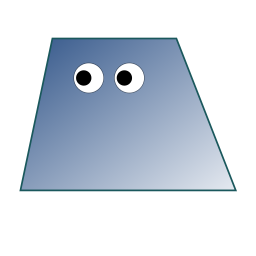I use Workman.
EDIT (2024-08-10T19:23Z): I should clarify that I am referring to the layout that you use for a physical computer keyboard, not a mobile/virtual keyboard.
QWERTY. i work on multiple environments that can’t always be accessed remotely, so that means I’m physically moving to different computers daily. It’s better for me to use the most common layout so that there’s as much consistency between systems as possible
QWERTY on a cheap Dell keyboard I’ve had for 12 years.
I’m sure some of the alternatives are objectively superior, but with all due respect to enthusiasts, I’m simply not passionate about it and have yet to be convinced that the time and pain spent on getting used to a new layout would actually be worth it in the long run.
Dvorak. Have been for years. Way less work to type the same speed as QWERTY.
Yup, plus don’t get coworkers “just needing my screen for a quick thing”. Win win!
My username approves.
My keyboard lays out flat on my desk. I don’t unfold the little legs underneath.
Savage
As nature intended.
Pet theory: most Dvorak users were, in their pre-enlightenment lives, messy freestyle 3-finger typists. If you ever went to the trouble of formally learning to touch-type Qwerty, moving to another layout just seems impossibly foreboding. No way.
You become multilingual. It doesn’t transfer the same way you think. I type dvorak at home, qwerty at work, and qwerty on mobile. My brain somehow knows when to switch. The most common slip up I run into is that my brain gets confused with a laptop and sometimes I mix the two.
Pet theory: most Dvorak users were, in their pre-enlightenment lives, messy freestyle 3-finger typists.
Given that Dvorak tries to maximize alternating hands when typing consecutive characters [1], that theory definitely feels plausible given that the “hunt-and-peck” style for typing naturally seems to work with alternating hands. I think the same idea could also be applied to mobile typing as you only have two thumbs — perhaps Dvorak would lend itself well to mobile typing?
References
- “Dvorak keyboard layout”. Wikipedia. Accessed: 2024-08-10T23:00Z. https://en.wikipedia.org/wiki/Dvorak_keyboard_layout#Overview
Letters should be typed by alternating between hands (which makes typing more rhythmic, increases speed, reduces error, and reduces fatigue).
If you ever went to the trouble of formally learning to touch-type Qwerty, moving to another layout just seems impossibly foreboding.
It’s not that bad. By my experience, having gone from QWERTY to Dvorak to Colemak to Workman, it takes maybe an hour to memorize the keys, then it’s just a matter of practicing by using it. You will progressively get faster and faster as it becomes second nature. To get to full typing speed and for it to feel completely natural, however, it will likely take a month, depending on how often and how much one types.
Something interesting that I noticed, though, is that it seems that the brain is only to be able to know one keyboard layout well at a time. If I learn a new layout, I don’t maintain my skill with the previous layout minus the skill lost due to lack of practice. It almost feels entirely zero-sum. As I gain skill in one keyboard layout, I seem to equally lose skill in the previously known keyboard layout. I do try and maintain some level of proficiency with QWERTY, given that it is still the standard and is the most common, but it takes considerably more effort. It seems to be less acquiring a new skill and more rewiring the brain.
I use semimak mainly but use qwerty often and I feel like there’s no problem with using both at all. This is just my experience though. When I first learned Dvorak and dropped qwerty I completely lost qwerty but it came back really easily later when I started using it more
You’re absolutely right in my case. I somehow got really fast at three finger hunt and peck, and could do it without looking. But, my form was all over the place and the amount of wrist movement was causing me major wrist issues. I knew I could never unlearn my terrible qwerty technique, but I needed to learn proper touch typing, so I learned Dvorak
Interesting. Apart from the wrist issue, the strain of constantly moving one’s eyes from keyboard to screen and back is really underestimated IMO. To be able to keep your eyes fixed on one place while typing is a serious luxury. I sometimes think that learning to touch-type when I was 17 was the single most useful thing I have ever done. It took a week. And then, as I remember, just a few months to overtake my former typing speed.
Why does workman have a different layout for Linux? That’s a headache for people who dual boot
What do you mean? It’s just a layout. How would it vary depending on the OS?
Under pros and cons:
Capslock is Backspace (Linux only) Shift+Capslock is Escape (Linux only)
Under pros and cons
Ah, okay! I didn’t see that. Good to know.
Quite funny that, assumedly, Windows prevents those things from being remapped. I personally love that the Capslock key got changed to the Backspace key. It’s so much more comfortable.
I’m buying a new (programmable) keyboard for the sole purpose of remapping capslock to backspace. Been using that for years and now my new employer forces me to use Windows where this isn’t possible without Avon rights - it drives me insane how often I end up LIKE THIS;
I ended up buying a programmable keyboard. I split space in half and moved backspace under my right thumb. I’m never going back. It’s so nice
Dvorak. I switched back in 2005 from qwerty and never looked back. I never looked forward either, so I may try out Colemak at some point in time. Workman looks solid for English, but I am not a native English speaker.
Quick! Type my username with one finger :)
:-)
Workman looks solid for English
Yeah, afaik, Workman was specifically designed for English. The official website for Workman doesn’t appear to specifically state that it was designed for only English, but there are a few small statements scattered throughout that hint at the theory that it was designed for English.
I tried dvorak in 2008 and was using it for about 6 months. The thing that really tripped me was the keyboard shortcuts. I was just too used to the QWERTY setup. Did you have to overcome this, and if so, how?
I think I always thought about shortcuts as consisting of their constituent parts, rather than a key shape that does an action. So when I switched, my brain still thought Ctrl+c, C just moved
Dvorak exclusively. This thread is the most I’ve heard of other people using it. To date, I’ve met 2 people who have HEARD of it, but no one else who uses it
Colemak
Been trying Colemak-DH but I’ll have to use it for at least half a year till I can give it a proper review
Dvorak to touch-type but qwerty on my phone’s virtual keyboard.
Dvorak for over thirty years; always used swipe typing with QWERTY on mobile devices
Querty with a 55 key ortholinear split keyboard aligned at almost a 90 degree angle.
Most of the complaints I hear about keyboard setups could be solved by either completely remapping the keys or, if you really need to not move your hands around, investing in one of these.
Oh no. I didn’t need to know about the Svalboard. I thought I’d got to endgame with the Glove80. 😬
My split ortholinear keyboard has been a game changer for the wrist pain I’ve been dealing with
The svalboard looks awesome. I’m going to look into that. Also the l and the b have a funny animation on that site :D
Dvorak since Dec 2010. Between semesters, I was just checking it out, not planning to stick with it at all. But, I really liked it, so I spent the rest of the semester break learning Dvorak and never looked back.
I met another dvorak user at work. I made a git commit that was meant to eventually be squashed with the message
aoeu, which apparently gave me away. My coworker then asked me if I typed in Dvorak; not immediately recalling the commit message, I was quite astonished; how tf did you know that? Turns out, he typed in Dvorak too.My username should be a giveaway…
Dvorak with some custom bindings for German diacritics and the Euro symbol, e.g. AltGr+a gives me ä.
Furthermore, my layout behaves like QWERTY when I told down Ctrl, so that shortcuts like Ctrl+C are still easy to press.
Switching to Dvorak immediately removed any pain I had started experiencing more and more often typing with QWERTY. In the long run it also improved my typing speed. I can usually achieve between 130 and 140.
Nice there is a great keyboard layout creator for windows.
If you use linux do you mind sharing your custom layout and how you did it?
On Windows it’s pretty easy. On Linux I found some shady kernel monkey patch for the Ctrl feature, but I don’t remember where.
Unfortunate :/
And the custom Dvorak layout with the umlauts on linux?
Never managed to make one. I just use KDE compose.
Let me know if you find something, though!









